
Charles Proteus Steinmetz was a German-American mathematician and electrical engineer and professor at Union College. He fostered the development of alternating current that made possible the expansion of the electric power industry in the United States, formulating mathematical theories for engineers. He made ground-breaking discoveries in the understanding of hysteresis that enabled engineers to design better electromagnetic apparatus equipment, especially electric motors for use in industry.
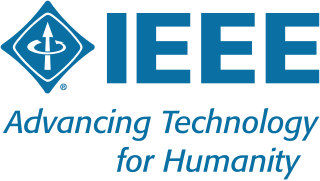
The Institute of Electrical and Electronics Engineers (IEEE) is a 501(c)(3) professional association for electronics engineering, electrical engineering, and other related disciplines with its corporate office in New York City and its operations center in Piscataway, New Jersey. The IEEE was formed from the amalgamation of the American Institute of Electrical Engineers and the Institute of Radio Engineers in 1963.
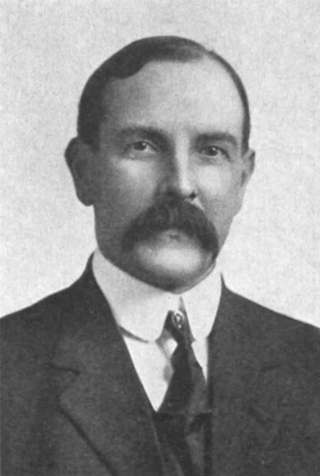
Arthur Edwin Kennelly was an American electrical engineer.
The Institute of Radio Engineers (IRE) was a professional organization which existed from 1912 until December 31, 1962. On January 1, 1963, it merged with the American Institute of Electrical Engineers (AIEE) to form the Institute of Electrical and Electronics Engineers (IEEE).
Technology governance means the governance, i.e., the steering between the different sectors—state, business, and NGOs—of the development of technology. It is the idea of governance within technology and its use, as well as the practices behind them. The concept is based on the notion of innovation and of techno-economic paradigm shifts according to the theories by scholars such as Joseph A. Schumpeter, Christopher Freeman, and Carlota Perez.
International Solid-State Circuits Conference is a global forum for presentation of advances in solid-state circuits and Systems-on-a-Chip. The conference is held every year in February at the San Francisco Marriott Marquis in downtown San Francisco. ISSCC is sponsored by IEEE Solid-State Circuits Society.

Edwin James Houston was an American electrical engineer, academic, businessman, inventor and writer.
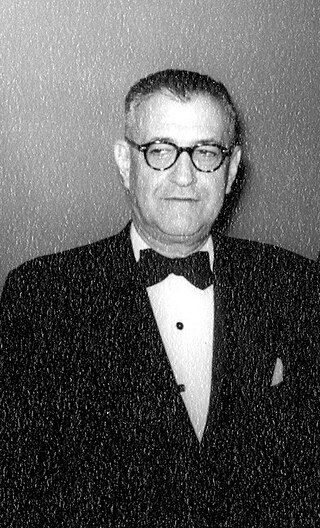
Walter Ransom Gail Baker was an American electrical engineer. He was a vice president of General Electric, and was Director of Engineering for the Radio Manufacturers Association. At the urging of James Lawrence Fly, Chairman of the Federal Communications Commission (FCC), Baker founded the National Television System Committee, or NTSC, in 1940. He served as president of the Institute of Radio Engineers (IRE) in 1947.
Nathaniel Shepard Keith was an American manufacturer, chemist, inventor, writer, and electrical engineer. Keith was born in Boston, Massachusetts, and worked in his fathers laboratory. He was instrumental in designing, manufacturing, and installing the original electric lighting and power system in San Francisco, California. In 1884 he became editor of Electric World, co-founded the American Institute of Electrical Engineers (AIEE) and served as the first secretary of the organization. The AIEE merged with other societies in 1963 to become the IEEE, the Institute of Electrical and Electronics Engineers.
The American Engineers' Council for Professional Development or simply the Engineers' Council for Professional Development (ECPD), established in June 1932, was an engineering professional body dedicated to the education, accreditation, regulation and professional development of the engineering professionals and students in the United States. ECPD grew and has changed its name to ABET, Inc. and its focus solely to accreditation.
The IEEE Edison Medal is presented by the Institute of Electrical and Electronics Engineers (IEEE) "for a career of meritorious achievement in electrical science, electrical engineering, or the electrical arts." It is the oldest medal in this field of engineering. The award consists of a gold medal, bronze replica, certificate, and honorarium. The medal may only be awarded to a new leap/breakthrough in the technological area of science.

The IEEE Medal of Honor is the highest recognition of the Institute of Electrical and Electronics Engineers (IEEE). It has been awarded since 1917, when its first recipient was Major Edwin H. Armstrong. It is given for an exceptional contribution or an extraordinary career in the IEEE fields of interest. The award consists of a gold medal, bronze replica, certificate, and honorarium. The Medal of Honor may only be awarded to an individual.
The initially called AIEE Lamme Medal was established in 1924 by the American Institute of Electrical Engineers (AIEE) to recognize members for 'meritorious achievement in the development of electrical apparatus or machinery.' The medal was named in recognition of Benjamin G. Lamme, Westinghouse' chief engineer, who amongst others was responsible for the construction of the Niagara Falls generators.

Patrick Eugene Haggerty was an American engineer and businessman. He was a co-founder and former president and chairman of Texas Instruments, Incorporated (TI). Under his leadership, the company grew from a small Texas oil exploration company into a global leader in the semiconductor industry. During his tenure, TI invested in transistors when their commercial value was still much in question, created the first silicon transistor, the first commercial transistor radio, the first integrated circuit, and helped develop and produce the first single chip microprocessor.
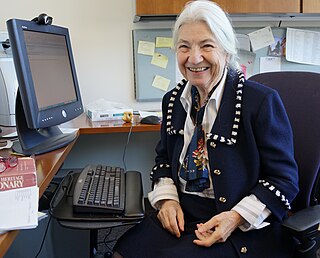
Ruzena Bajcsy is an American engineer and computer scientist who specializes in robotics. She is professor of electrical engineering and computer science at the University of California, Berkeley, where she is also director emerita of CITRIS.
Donald Glen Fink was an American electrical engineer, a pioneer in the development of radio navigation systems and television standards, vice president for research of Philco, president of the Institute of Radio Engineers, General Manager of the IEEE, and an editor of many important publications in electrical engineering.
The Proceedings of the IEEE is a monthly peer-reviewed scientific journal published by the Institute of Electrical and Electronics Engineers (IEEE). The journal focuses on electrical engineering and computer science. According to the Journal Citation Reports, the journal has a 2017 impact factor of 9.107, ranking it sixth in the category "Engineering, Electrical & Electronic." In 2018, it became fifth with an enhanced impact factor of 10.694.
The American Federation of Information Processing Societies (AFIPS) was an umbrella organization of professional societies established on May 10, 1961, and dissolved in 1990. Its mission was to advance knowledge in the field of information science, and to represent its member societies in international forums.
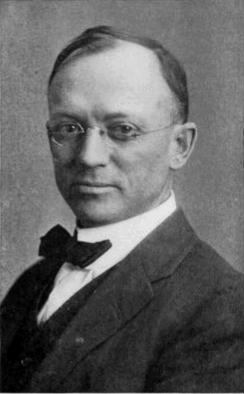
Robert Henry Marriott (1879-1951) was an American electrical engineer, and one of the first persons to work in the field of radio communication. In 1902 he engineered the first commercial radiotelegraph link established in the United States by a U.S. company, connecting the island of Santa Catalina with the California mainland. He founded the Wireless Institute professional society in 1909, which was merged in 1912 with the Society of Wireless Telegraph Engineers to form the Institute of Radio Engineers (IRE), and served as the IRE's first president.
IEEE Transactions on Aerospace and Electronic Systems is a bimonthly peer-reviewed scientific journal published by the IEEE Aerospace and Electronic Systems Society. It covers the organization, design, development, integration, and operation of complex systems for space, air, ocean, or ground environment. The editor-in-chief is Gokhan Inalhan. According to the Journal Citation Reports, the journal has a 2020 impact factor of 4.102.







